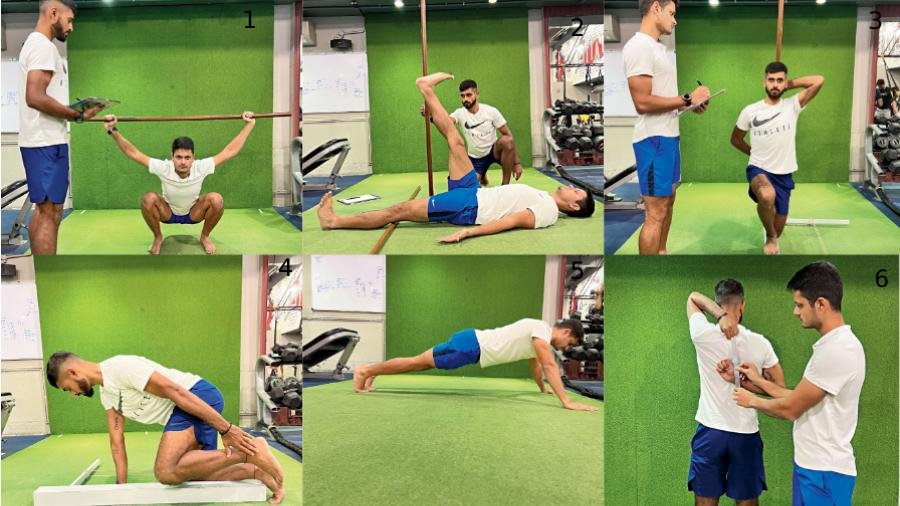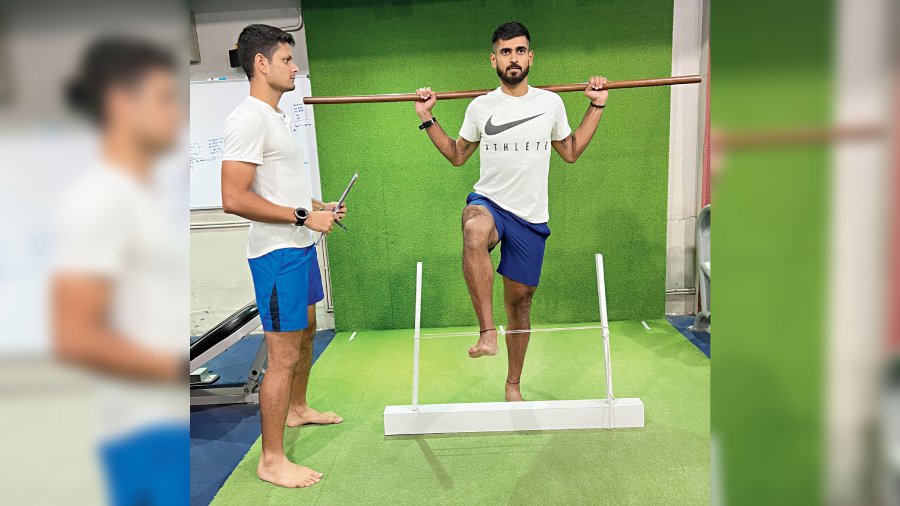Functional Movement Systems (FMS) is a series of pre-designed physical tests and tasks to assess an individual’s functional and fundamental movement patterns. This type of functional screening can be used to highlight or even predict the individual’s risk potential of developing a musculoskeletal injury or disorder.
A stitch in time saves nine; prevention is better than cure. The results of a Functional Movement screening can be interpreted to draw up a preventive exercise/movement programme that can reduce the intensity or even completely eliminate the negative impact of an impending injury or dysfunction. This can help to save the individual from future trauma, disability, despair and even depression associated with both acute and chronic pain. FMS is not intended to diagnose orthopedic problems but rather to demonstrate opportunities for improved movements in individuals with no current pain complaints or musculoskeletal injury.
Why is Functional Movement screen important?
According to Spandan Dutta, FMS practitioner and corrective exercise coach at Endorphins, “The screen will throw up and lay bare muscle imbalances, reduced flexibility, poor core strength and deficits in neural control and proprioception that will ultimately manifest itself in future pain and disability.”
By screening these patterns, FMS readily identifies functional limitations and asymmetries. These are issues that can reduce the effects of functional training and physical conditioning and distort body awareness.
How FMS works
Physical therapist Gray Cook helped devise the FMS that aims to identify physical imbalances and weakness in the human movement pattern critical to normal function through a simple ranking and grading system.
Cook designed a set of movement patterns that after a 20-minute screening and study will generate a score. Depending on how well or poorly an individual scores in these tests, he or she is assigned a set of corrective exercises that will help to restore correct movement patterns while developing strength.
FMS is again performed by the physical therapist or trainer after an interval of a few months to track the progress and check the efficacy and effectiveness of the exercise programme.
What is the relation between Primal Patterns and FMS?
There are seven basic movements that the human body can perform and all other exercises are merely variations of these seven — pull, push, squat, lunge, hinge, rotation and gait. When performing all of these movements, you will be able to stimulate the major muscle groups in your body. FMS is designed in such a manner that it screens all the primal patterns of the human body and assigns a score that is a numerical description of the effectiveness of a person’s movement efficiency.
According to Sunny Mishra, FMS exponent and senior coach at Endorphins: “All the primal movements are beautifully disguised within the Movement Screen in a way that a person who scores high on these tests will also have good patterns in exercises like the squat, deadlift, swing, lunge, Turkish get-ups and so on.”
The Functional Movement Screen (FMS) — and later the Selective Functional Movement Assessment (SFMA) — was developed to help clinicians and healthcare professions screen individuals for risk of injury and / or a dysfunctional or performance-limiting movement pattern. FMS was first presented commercially as a manual for screening athletes and the product line was later expanded to include a range of equipment for performing the screen, certifications for those screening athletes, seminars, books, and videos. Kazi Kiron, senior strength and conditioning coach at Endorphins, who has wide experience in working with Olympic athletes like Sangeeta Phogat (wrestling), feels that for him FMS “goes beyond just a screen and acts as a training tool as well”.
FMS is a tool used to identify asymmetries which result in functional movement deficiencies. Readers of this column could be familiar with the seven primal human patterns. FMS aims to identify imbalances and deficits in mobility and stability while executing the seven fundamental movement patterns. These movement patterns are designed to provide observable performance of basic locomotor, manipulative and stabilising movements by placing an individual in extreme positions where weaknesses and imbalances become noticeable if appropriate mobility and motor control is not utilised. Once these deficiencies have been identified through the FMS, a program of corrective exercises is then developed with the goal of preventing musculoskeletal injuries.

1. Deep squat 2. In-line lunge 3. Active straight-leg raise 4. Rotary stability 5. Trunk stability Push-up 6. Shoulder mobility
What are the exercises that make up the test?
The FMS consists of seven movement patterns which require mobility and stability. The seven following movement patterns are scored from zero to 3 points, with the sum creating a score ranging from zero to 21 points.
- Deep squat
- Hurdle step
- In-line lunge
- Active straight-leg raise
- Trunk stability push-up
- Rotary stability
- Shoulder mobility
Intended population
FMS was intended to serve as a screen to identify individuals with functional movement deficits that could increase the vulnerability or risk of injury. The literature is a compilation of data gathered across a sample comprising young, active individuals to middle-aged individuals, elite, collegiate and professional athletes, as well as military and firefighters. Lower FMS scores have been noted to be associated with an increased BMI, increased age and decreased activity level.
How useful is it for predicting injury?
A score of <=14 on FMS is used as the cut-off score. Individuals who score less than 14 points on the FMS screen have greater odd for sustaining an injury. Research is limited and it is not yet clear for which sports or professions the FMS is optimal in predicting injury risk, and whether the original cut-off score of <=14 is valid in different populations.
FMS vs SFMA
Many clinicians confuse Functional Movement Screen tool with Selective Functional Movement Assessment. Both tools are a part of the same Functional Movement System created by Cook and colleagues, but their fundamental purposes are quite different. The SFMA is meant to be used in a diagnostic capacity, designed to identify musculoskeletal dysfunction among individuals affected by pain. Whereas the FMS is a screening tool, not intended for diagnosis. The FMS aims to identify imbalances in mobility and stability during functional movements.
Ranadeep Moitra is a strength and conditioning specialist and corrective exercise coach
Demonstrated by FMS practitioners Spandan Dutta and Sunny Mishra
Pictures by the author
